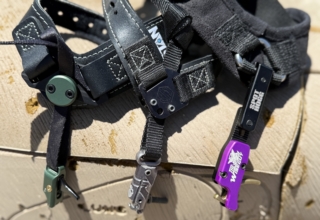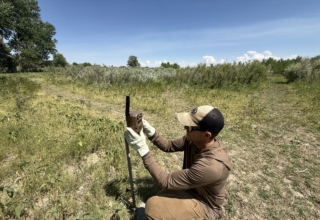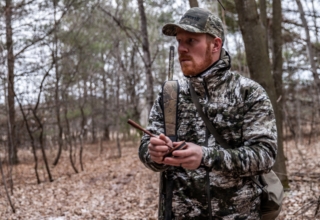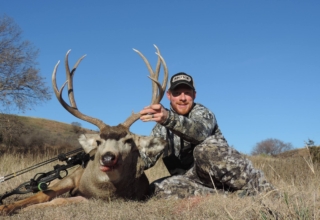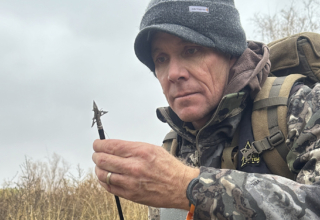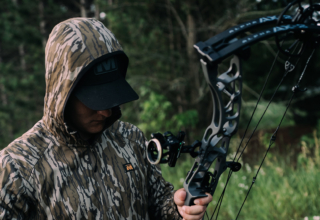Some of the most rewarding harvests happen when you break out of your comfort zone and test your skills against a challenging species in an unforgiving environment.
by Darron McDougal
My only shelter from the scorching sun was the hood, mask, and long sleeves of my thin performance hoodie. Conditions were miserable, but I didn’t dare retreat to my pickup’s air conditioning. I’d watched a string of muley bucks, including two dandies, head towards an aspen pocket — the only shade trees nearby. Certainly, they were retreating to the cool aspen shadows.
It was late in the morning by the time I’d descended the steep, rocky slope I’d been glassing from and began cutting the mile and a half that separated me from the bucks. Mindful of the wind, I circled wide to get downwind of the aspens without visually exposing myself. Then, I began crawling.
Heat waves danced in my binoculars within 300 yards of the aspens as I glassed their shadows. A young buck was standing in the shade, confirming the bachelor group was there. I reached the aspens, crawling and then pausing to glass for antler tips and jumbo ears. Suddenly, the wind hit my neck, and the entire bachelor group exploded; I had no choice but to fold my hand after the torturous, hours-long stalk, then slog 2 miles back to the truck without a sip of water remaining in my hydration pack. I cannot explain how treacherous those 2 miles were in mid-90-degree heat with full sun exposure and carrying a hefty pack.
During that mule deer hunt, three other well-executed stalks in treacherous terrain and punishing heat fell apart due to unexpected wind shifts. Pair that with steep terrain peppered with loose rocks and the sweltering heat, and just getting through each outing was a feat. Success felt unattainable at times, but I kept pushing, overcame the odds, and finally connected with a big, mature buck on Day 8.
Stepping Out of Your Comfort Zone
In the United States, we demand instant gratification. Further, our country’s work ethic isn’t nearly what it used to be. Simply put, many people want success without putting in the work. That’s funny because the most gratifying things in life come at the expense of hard work.
I’m not saying that any type of hunting is “easy,” but many hunters get deeply rooted in their comfort zones. Maybe it’s hunting deer strictly over a bait pile or hunting the same stand over and over for the fear of changing it up. Whatever your comfort zone is, I want you to consider if there are any real hardships involved. If not, hunting might become stale someday, or you might limit the satisfaction you feel upon succeeding.

Now, I know we all hunt for different reasons, and I’m sensitive to the fact that some hunters have limitations. But, for those of us who are able-bodied, I urge you to break away from your comfort zone, unshackle the chains of fear, and try a hunt that involves true hardships. This usually entails conditions or obstacles that you’re unfamiliar with; you know, stepping into the unknown.
Even if you fail and kill an animal on a hunt like this, it’s a win just to conquer your fears and overcome new challenges. I believe you’ll walk away with a whole new perspective and appreciation for hunting, and if you kill an animal, the satisfaction will be unsurpassed. Intentionally inviting challenges into your hunting life is how you develop character, test your skills, and keep hunting fresh and interesting.
If that sounds like a challenge you’re ready to accept, let me detail some hunts that will challenge you.
Spot-and-Stalk Plains Pronghorns
Pronghorns inhabit sun-parched plains with long visibility and no shelter from the scorching sun. This hunt will test you if you’re used to sitting in treestands for whitetails from September through December.
First, there is no way to prepare for hours of glassing in glaring, bright conditions. Even with sunglasses, the sun-washed plains can begin to mess with you. Add hours of driving and being “on” all day because pronghorns are visible and active all day, and it can become a mentally taxing hunt.
Then, there is the steep task of stalking animals that are rarely alone and have 300-degree binocular vision. Seldom do bucks position themselves where cover allows you to stalk upright, so expect to crawl, or even belly crawl, for hundreds of yards while dodging cacti and yucca spikes, not to mention the occasional rattlesnake. Often, the wind is whipping, further adding to the hunt’s mentally-taxing aspects.

Stalking within 250 yards for a rifle shot is difficult enough. Getting a 40-yard shot is next-level difficult. And if you finally earn a shot opportunity, it’s rarely a gimme. Wind can make archery and even rifle shots hard to make, and antelope are fast on their feet, meaning they can duck even a well-executed arrow.
If your comfort zone is hunting whitetails from stands or blinds, a spot-and-stalk pronghorn hunt is an ideal entry-level gritty hunt.
Mountain Mule Deer
Hunting mule deer in a rolling plains habitat is one thing, but hunting them in the high country or on the steep rocky slopes of mid to lower elevations is one of the most difficult western hunts, particularly if you’re hunting for a fully mature buck. Mule deer are highly in tune with their surroundings, and as my opening anecdote implies, the slightest wind change can foil an otherwise perfect stalk.
Beyond that, stalking in close can be difficult. On my successful stalk, I had to pick up loose rocks and move them out of my way as I closed the final 40 yards to reach a reasonable shooting range. Further, the early season often entails brutally hot temperatures with no sun shelter. Long hikes in dry, hot conditions are standard, and the brightness warrants a good set of sunglasses.
Spotting bucks from up to a couple of miles away is the name of the game, and long hours behind glass strains your eyes. Next, you must choose a route, pick sufficient landmarks, and relocate the buck(s) once you’re close. Even the simplest oversight can drastically change your stalk’s outcome. Successfully stalking a big mule deer, particularly with a bow, is considered an art by even the best muley hunters.
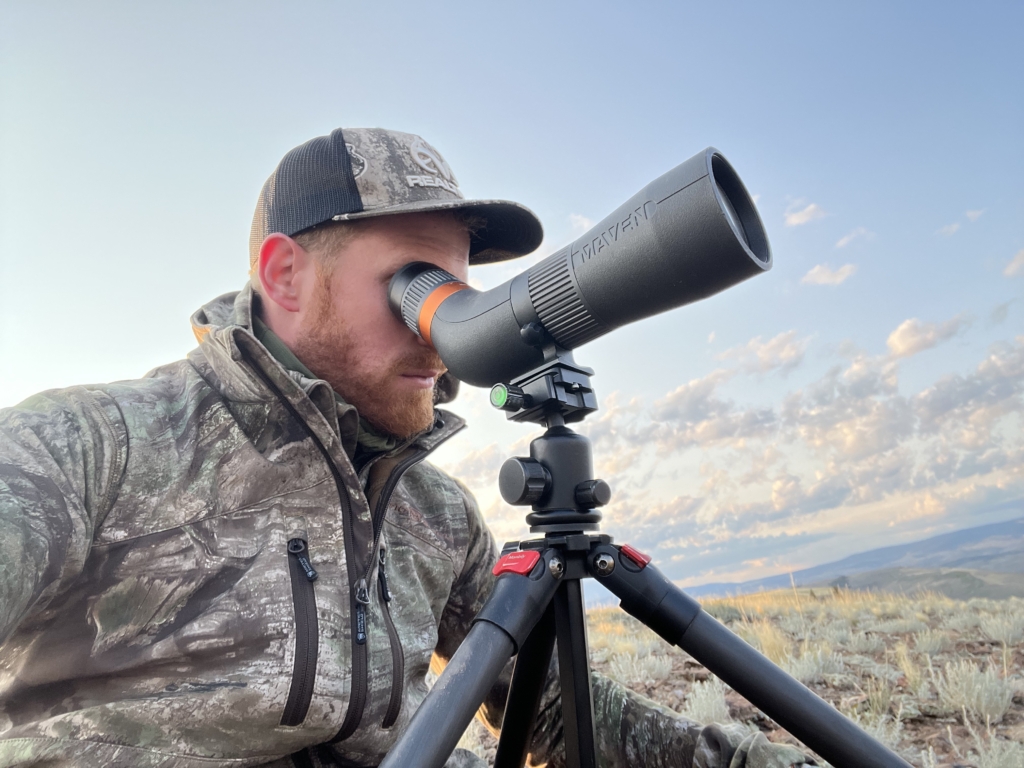
Hunting mule deer in rugged terrain later in the season mitigates hot, dry conditions. Still, the snow depth, hunting pressure, and splitting of bachelor buck groups increase the challenge of finding deer. Put a buck on the ground, and then you’ll have to pack the meat out, which is never easy.
If you want to turn up the difficulty dial from the pronghorn hunt, a mountain mule deer hunt gets even grittier and will test you from every angle.
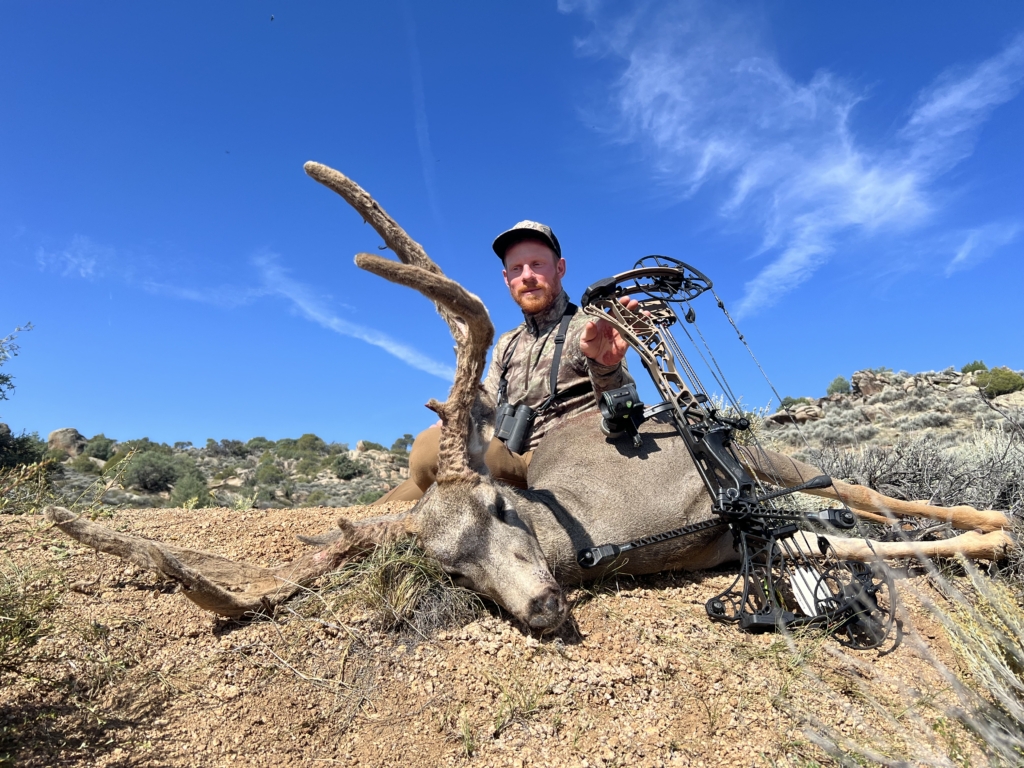
DIY Archery Elk
The demand for elk hunting is through the roof, making it difficult to obtain an elk tag in many states. Nonresident tag and license fees have skyrocketed, so even a DIY public land hunt is not cheap. Getting a tag is the initial challenge, but then comes the grit.
Aside from private-land hayfield elk, getting on the same playing field as elk is physically demanding. While you can find them lower, most archery season elk live at 10,000 feet or higher elevation. If you’re a flatlander, you must prepare your core, legs, and upper body to traverse rugged terrain with a heavy pack while maintaining solid footing. To that end, training for elk hunting is where the grit begins.
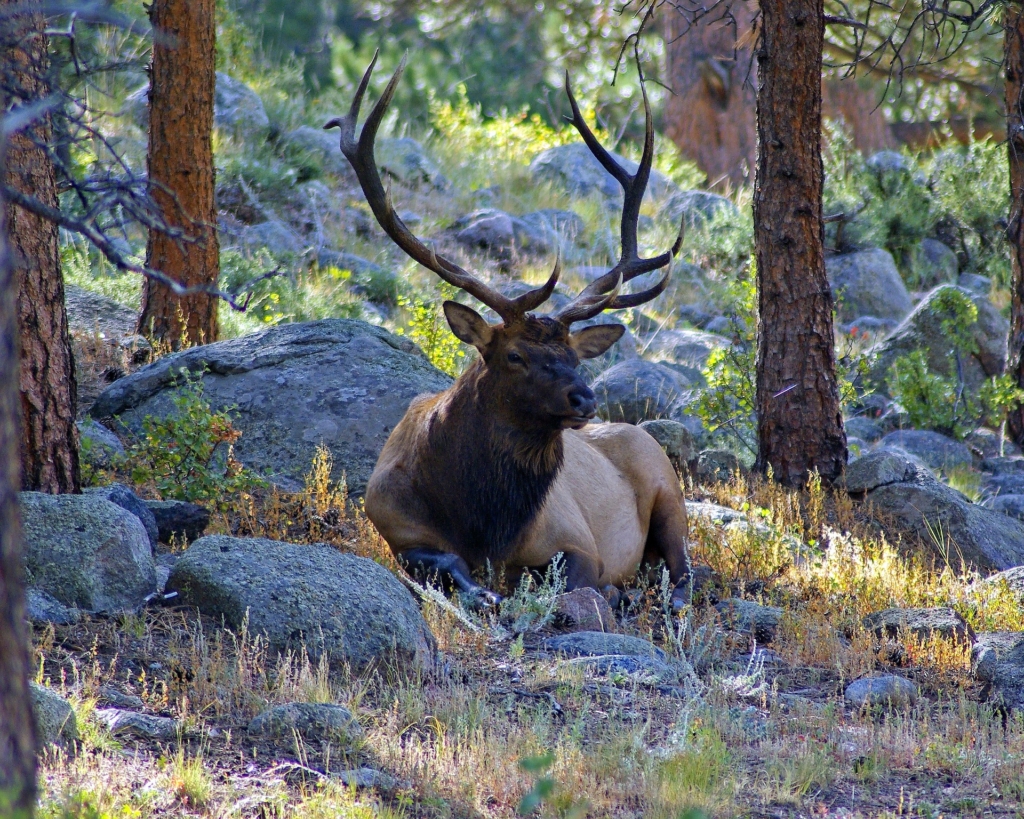
Next, reaching elk country is challenging for many of us. Driving for 12-30 hours is mentally taxing, especially when you have only a week to hunt and must dive right into the hunt without taking a day to rest.
Elk are most active before dawn, and just after daybreak, so you must be within a few hundred yards of them at the onset of shooting light. Otherwise, you won’t likely catch up to them. If they’re moving from lower feeding grounds to higher bedding areas, they’ll often reach their bedding areas, lay down, and stop bugling while you’re still hundreds of yards down the mountain, huffing and puffing.
You can practically count on success being within reach but slipping through your grasp like water. If you’re calling, the cows and calves might bust you before you see the bull. Winds and thermals play a huge factor. Elk miss nothing with their noses. I’ve had dozens of arduous stalks or diligent calling sessions fall apart, thanks to the wind.
Elk are also extremely tough, and anything less than a perfect shot will almost certainly entail some drama or an unrecovered elk. Speaking of shots, when you’re hunting alone and either stalking or calling, they often unfold without notice and are now-or-never affairs. I’ve rarely had opportunities to zap a bull with a rangefinder before taking my shot because they’re usually looking my way and ready to bolt.
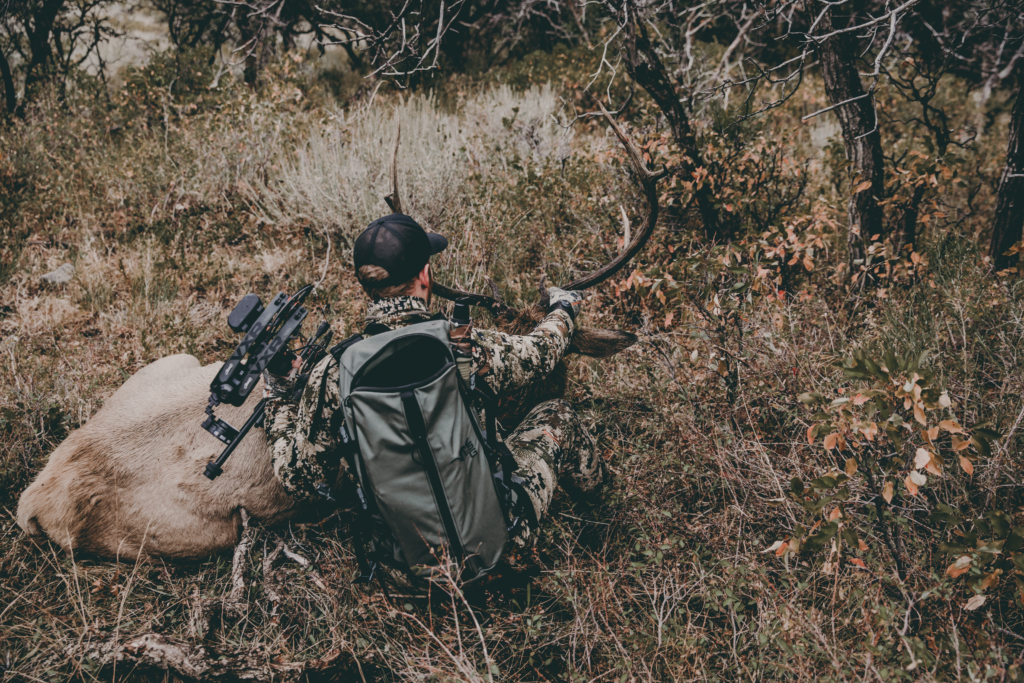
The average success rate for archery elk is around 10 percent. Don’t expect to get an elk every year. If and when you do, be prepared to retrieve the meat as quickly as possible to avoid spoilage, as warm daytime temps are common in the mountains during September.
If you’re worn down from hunting all week, suck it up, buttercup; that meat is some of the best. It would be a travesty to let it spoil. If you’re in excellent shape and have the right pack, it will still take at least three trips and likely more to get the meat back to the truck. If you have a camp to pack out, expect at least one more. Even for an able-bodied fellow, about five trips in and out with meat and gear are common.
The Best Things Are Difficult to Attain
Have you been bowhunting in your comfort zone for too long? Is hunting becoming stale? Are you experiencing less satisfaction when you succeed than when you were younger? Challenging yourself and seeing what you’re made of is not a bad idea to keep things fresh and exciting.
A good way to do that is to accept the challenge of a gritty hunt like one of the three I’ve presented here. The best things in life don’t come via instant gratification. If you want to win at one of these gritty hunts, you’ll most likely have to grind it out with all you’ve got. But, the satisfaction will be unparalleled.



